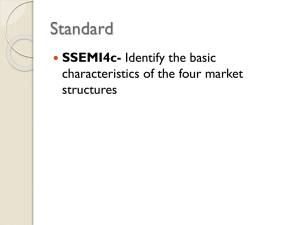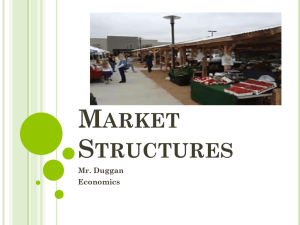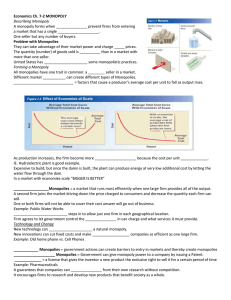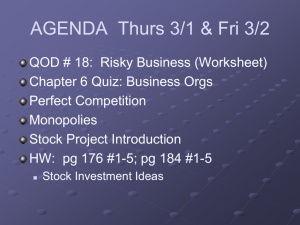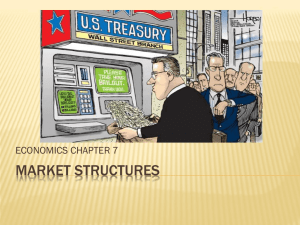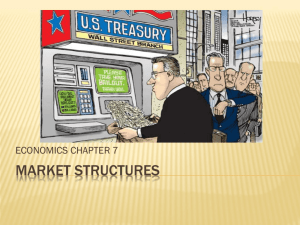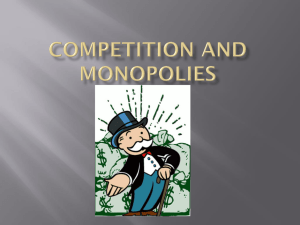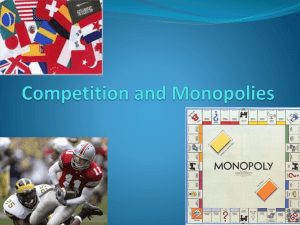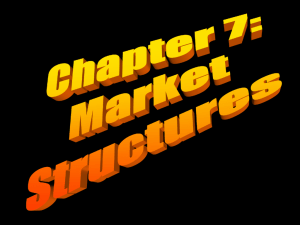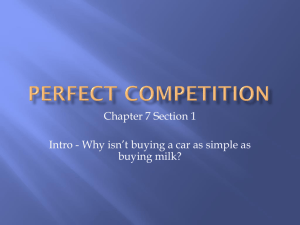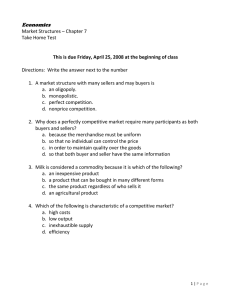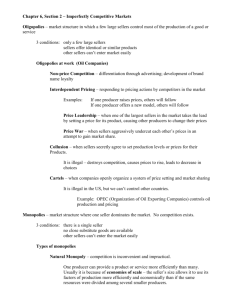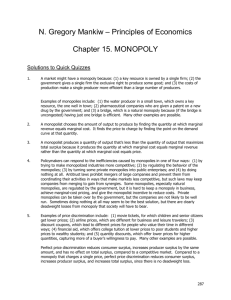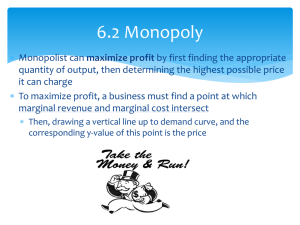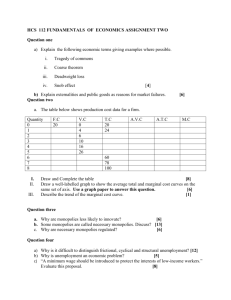Section 1: Guided Reading and Review – PERFECT COMPETITION
advertisement
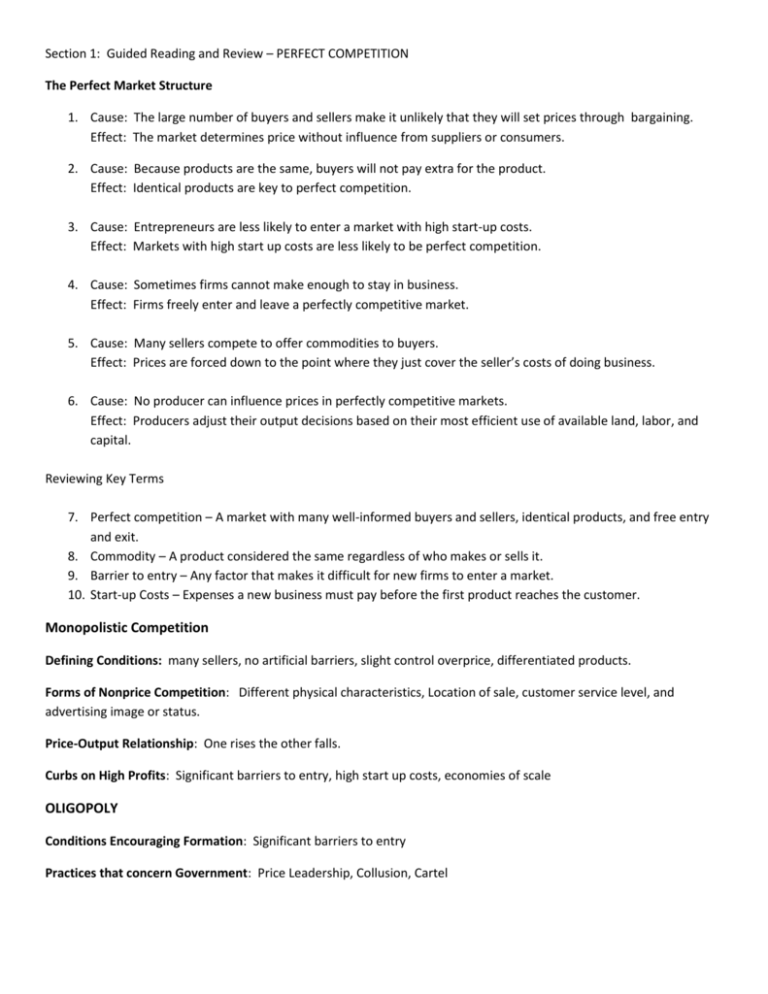
Section 1: Guided Reading and Review – PERFECT COMPETITION The Perfect Market Structure 1. Cause: The large number of buyers and sellers make it unlikely that they will set prices through bargaining. Effect: The market determines price without influence from suppliers or consumers. 2. Cause: Because products are the same, buyers will not pay extra for the product. Effect: Identical products are key to perfect competition. 3. Cause: Entrepreneurs are less likely to enter a market with high start-up costs. Effect: Markets with high start up costs are less likely to be perfect competition. 4. Cause: Sometimes firms cannot make enough to stay in business. Effect: Firms freely enter and leave a perfectly competitive market. 5. Cause: Many sellers compete to offer commodities to buyers. Effect: Prices are forced down to the point where they just cover the seller’s costs of doing business. 6. Cause: No producer can influence prices in perfectly competitive markets. Effect: Producers adjust their output decisions based on their most efficient use of available land, labor, and capital. Reviewing Key Terms 7. Perfect competition – A market with many well-informed buyers and sellers, identical products, and free entry and exit. 8. Commodity – A product considered the same regardless of who makes or sells it. 9. Barrier to entry – Any factor that makes it difficult for new firms to enter a market. 10. Start-up Costs – Expenses a new business must pay before the first product reaches the customer. Monopolistic Competition Defining Conditions: many sellers, no artificial barriers, slight control overprice, differentiated products. Forms of Nonprice Competition: Different physical characteristics, Location of sale, customer service level, and advertising image or status. Price-Output Relationship: One rises the other falls. Curbs on High Profits: Significant barriers to entry, high start up costs, economies of scale OLIGOPOLY Conditions Encouraging Formation: Significant barriers to entry Practices that concern Government: Price Leadership, Collusion, Cartel Monopoly In the Monopolist Market Natural Monopolies 1. Why they exist – Competing sellers would create less efficient market 2. Two examples – Public water companies or Public electric utilities 3. Advantage of – Can avoid wasting resources for duplicate facilities 4. Government role in - Government may allow one firm in each geographical area; it then controls pricing and what services are to be offered. Government Monopolies 5. Type set up by patents – Technological 6. Why government grants patented monopolies – To encourage research and development that benefits society 7. Example of an industrial monopoly – Professional Sports Leagues 8. Two examples of government monopolies by license – Radio and television broadcast frequencies, and city public parking lots. Production and Pricing 9. Effect of a monopolist’s price increase – It will generally sell less. 10. Relationship between price and marginal revenue when a monopolist cuts the price to sell more – Marginal revenue is less than price. 11. How a monopolist maximizes profits – Chooses a level of output where marginal costs = marginal revenue. Reviewing Key Terms 12. In a market with only one seller, that seller has a monopoly. 13. Characteristics that cause a producer’s average cost to drop as production rises are economies of scale. 14. A contract issued by a local authority that gives a single firm the right to sell its goods within an exclusive market is a franchise. 15. A monopoly offering targeted discounts is practicing Price Discrimination.
